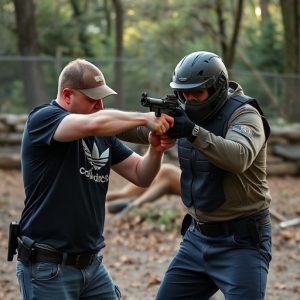Tactical Stun Guns & Privacy: Balancing Discretion and Detection
In an era of heightened personal safety concerns, the discreet tactical stun gun with integrated LED…….
In an era of heightened personal safety concerns, the discreet tactical stun gun with integrated LED flashlight has gained popularity but poses unique detection challenges for law enforcement. Non-metallic designs and advanced technology make traditional metal detectors ineffective, prompting exploration of alternative methods like specialized sensors and imaging technologies. While these stun guns offer enhanced visibility and defense capabilities in low-light scenarios, they also present risks, such as potential distractions or reduced stealth. Law enforcement agencies are actively seeking innovative solutions to accurately detect these devices while ensuring citizen and officer safety, utilizing advanced technology, sensor integration, and training to maintain discreet security measures without public alarm.
In today’s world, self-defense options like concealed stun guns are gaining popularity for personal safety. However, detecting these hidden devices presents a growing challenge. This article delves into the complex landscape of concealed stun gun detection, exploring current technologies and their limitations. We examine tactical stun guns with LED flashlights, highlighting their dual nature as tools for protection and potential concealment. Additionally, we discuss privacy concerns and propose solutions to improve security while preserving individual privacy, especially in light of discreet self-defense methods’ rising popularity.
- Understanding Concealed Stun Gun Detection: The Current Landscape
- Tactical Stun Guns with LED Flashlights: A Double-Edged Sword
- Challenges in Stun Gun Detection Technology
- Privacy Concerns and the Rise of Discreet Self-Defense
- Potential Solutions: Enhancing Security without Sacrificing Privacy
Understanding Concealed Stun Gun Detection: The Current Landscape
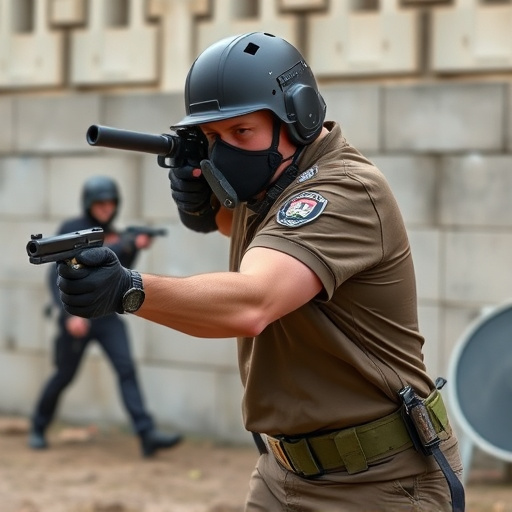
In today’s world, where personal safety is a top concern, concealed stun gun detection has emerged as a critical issue. With an increasing number of individuals opting for tactical self-defense tools like stun guns, there’s a growing need to address their discreet use. A tactical stun gun with an integrated LED flashlight is just one such innovation, combining functionality and secrecy. These devices are designed to provide users with a powerful defense mechanism while maintaining a low profile.
The current landscape of concealed stun gun detection is a mix of technological advancements and regulatory challenges. While some jurisdictions have implemented strict laws regarding the open carry of firearms, including stun guns, detecting concealed weapons remains a complex task. Traditional metal detectors may not be effective against non-metallic stun guns, prompting law enforcement agencies to explore alternative methods such as advanced imaging technologies and specialized sensors.
Tactical Stun Guns with LED Flashlights: A Double-Edged Sword
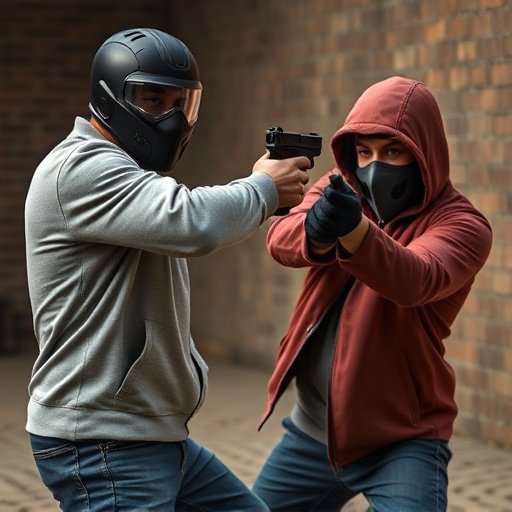
Tactical stun guns equipped with LED flashlights present both advantages and concerns for personal safety. On one hand, these devices offer enhanced visibility during low-light situations, allowing users to identify potential threats more effectively. The bright LED light can temporarily blind attackers, providing a crucial moment for escape or further defense. This feature is particularly valuable in outdoor scenarios or enclosed spaces where lighting conditions are unpredictable.
However, the integrated LED flashlight also poses hidden risks. Malicious actors could potentially exploit this functionality, using the flash as a distraction technique to obscure their movements or even temporarily disorient their targets. Moreover, the addition of a flashlight increases the overall profile of the stun gun, making it more visible and recognizable as a weapon, which may not be desirable in situations where stealth is paramount.
Challenges in Stun Gun Detection Technology
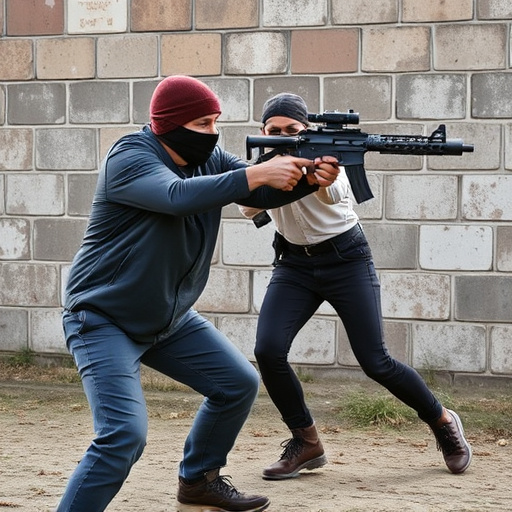
The detection of concealed stun guns presents a unique set of challenges for law enforcement and security professionals, especially when considering the diverse range of tactical stun guns with integrated LED flashlights available on the market today. One of the primary hurdles is the ability to differentiate between harmless everyday objects and actual stun devices, which often mimic the size and shape of ordinary items like keychains or pens. This similarity in appearance makes it difficult for metal detectors and other conventional security systems to accurately identify a stun gun, leading to potential false positives or negatives.
Furthermore, modern stun guns employ advanced technology, including non-conduction materials and sophisticated circuitry, which can interfere with traditional detection methods. The LED flashlights integrated into these tactical devices can also cause interference, making it even more challenging for detection systems to accurately pinpoint the presence of a stun gun. As a result, law enforcement agencies are constantly seeking innovative solutions to keep pace with the evolving technology of stun guns and ensure the safety of both citizens and officers alike.
Privacy Concerns and the Rise of Discreet Self-Defense
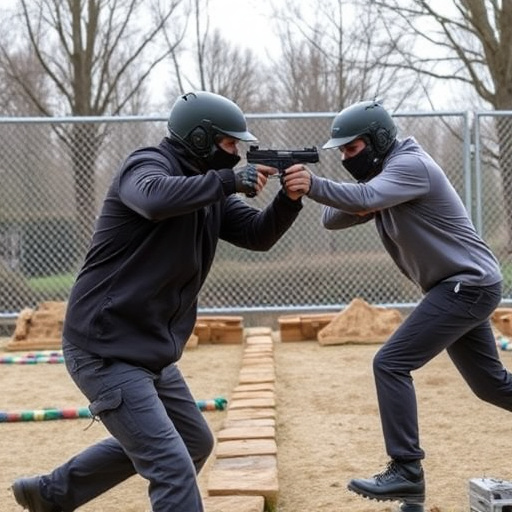
In today’s world, privacy is a valuable commodity, and individuals are increasingly concerned about their personal safety in public spaces. This has led to a growing demand for discreet self-defense tools that offer both effectiveness and anonymity. One such device gaining popularity is the tactical stun gun with LED flashlight—a compact and versatile tool designed for easy concealment.
The rise of hidden stun guns caters to privacy concerns, enabling users to protect themselves without drawing unnecessary attention. These tactical devices often feature advanced features like a bright LED flashlight, making them more than just a deterrent; they provide a sense of security in low-light conditions. With their sleek and unassuming designs, these stun guns can be easily carried as personal protection, ensuring individuals feel empowered while maintaining their right to privacy.
Potential Solutions: Enhancing Security without Sacrificing Privacy
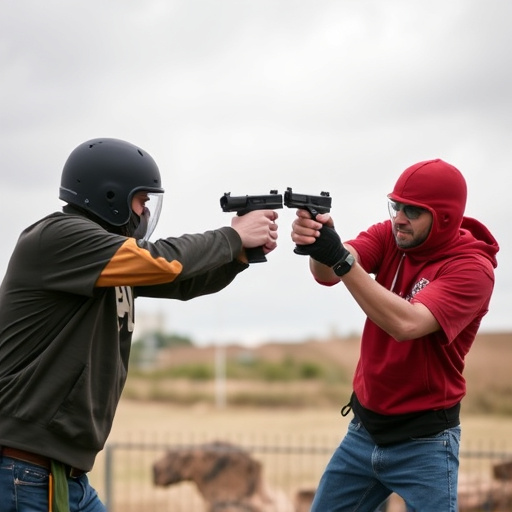
In addressing concealed stun gun detection concerns, there are potential solutions that can enhance security without sacrificing privacy. One such solution lies in the advancement of technology for detecting unconventional weapons like tactical stun guns with LED flashlights. Developing more sophisticated sensors and algorithms that can accurately identify these devices while maintaining discretion is key. Such systems could be integrated into existing security infrastructure, allowing authorities to respond swiftly without raising unnecessary alarm among the public.
Additionally, training security personnel in advanced detection methods and promoting public awareness campaigns can further bolster security measures. By educating both staff and citizens about the subtle signs of stun gun possession, such as unusual behavior or specific flashlight patterns, it becomes possible to anticipate and prevent potential threats more effectively. This balanced approach ensures that privacy remains intact while fortifying security protocols.
As the use of tactical stun guns with integrated LED flashlights becomes more prevalent for personal defense, the need for advanced detection methods is crucial. While these devices offer discreet self-defense solutions, the growing concern lies in balancing security with privacy. Challenges in stun gun detection technology prompt us to explore innovative approaches that enhance security measures without compromising individual freedoms. By addressing these issues, we can ensure a safer environment while respecting personal privacy, ultimately fostering a more secure and informed society.
